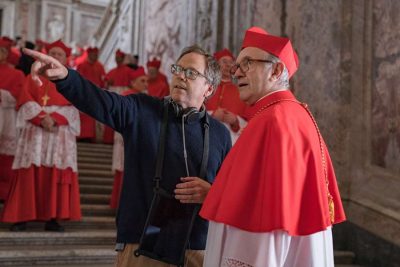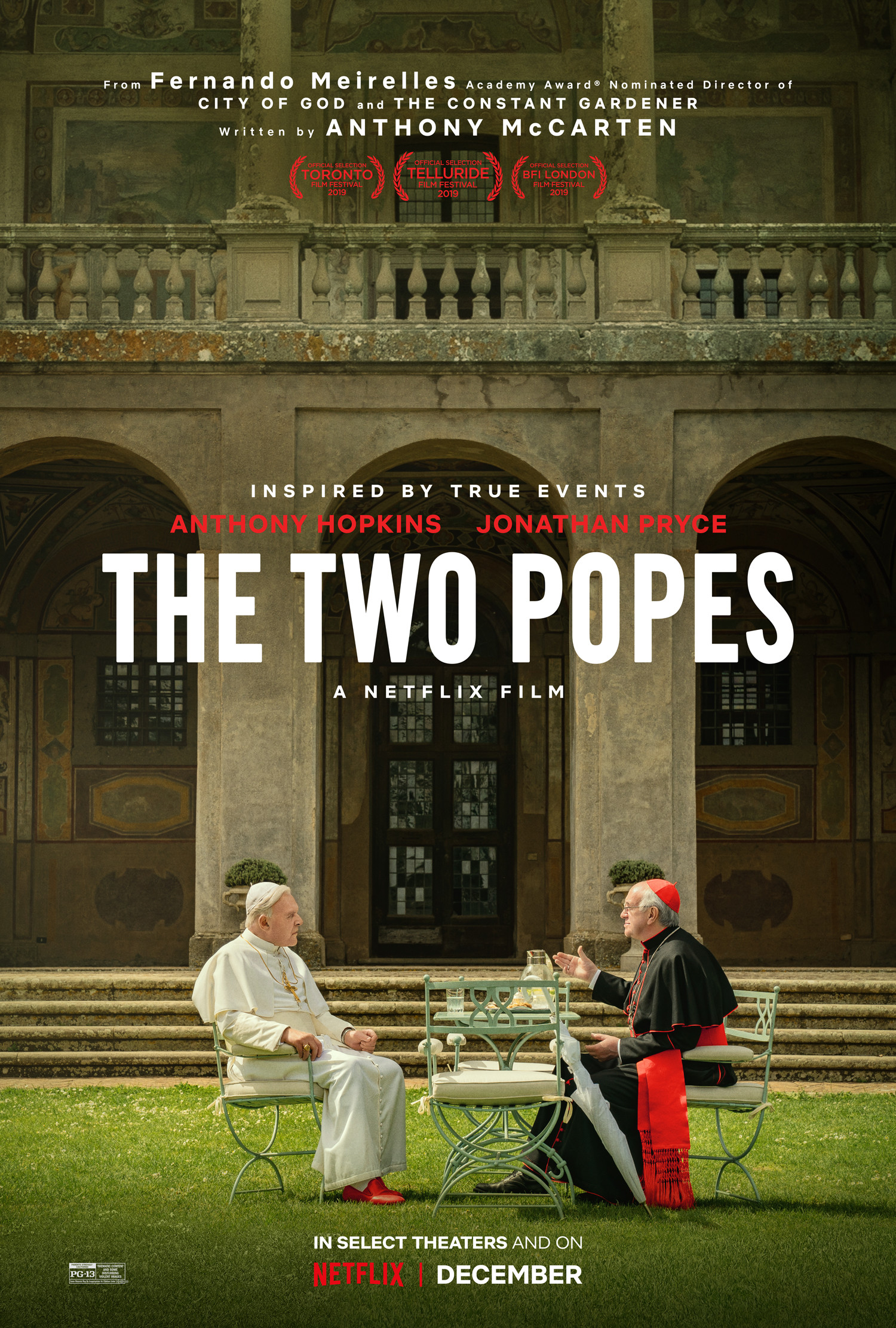Does ‘The Two Popes’ fairly represent Francis and Benedict? Critics say ‘no’
 A new Netflix production, “The Two Popes” centres on several imagined meetings between Pope Benedict XVI and Cardinal Jorge Bergoglio in the period between the 2005 conclave which elected Benedict and the 2013 conclave which elected Pope Francis.
A new Netflix production, “The Two Popes” centres on several imagined meetings between Pope Benedict XVI and Cardinal Jorge Bergoglio in the period between the 2005 conclave which elected Benedict and the 2013 conclave which elected Pope Francis.
Benedict XVI is played by Anthony Hopkins, and Cardinal Bergoglio, the future Pope Francis, is played by Jonathan Pryce.
While filmmakers say the movie is a work of fiction, the movie’s director also told CNA it represents his understanding of Pope Francis’ values. But critics emphasize the movie does not accurately represent Pope Benedict and Pope Francis, and instead reflects an ideological approach to the two men.
“The schematic casting of Pope Benedict XVI as a rigid reactionary and the future Pope Francis as a reforming revolutionary has less to do with the reality of either man than with the dramatist’s need for conflict and an ideological preference for the narrative of progressive liberation triumphing over hidebound traditionalism,” Deacon Steven Greydanus, a film critic and the founder of decentfilms.com, told CNA.
The thesis of “The Two Popes,” Greydanus said, “is that Benedict represents everything that was wrong with the Church of the past, while Francis is everything we need for the Church of tomorrow. Benedict is the vain, ambitious pope rejected by God, while Francis is the grounded, detached pastor chosen by God to lead us into the future.”
“Treating Benedict and Francis as emblems of antithetical camps, each opposed to everything the other stands for, is not only unjust to both popes, it perpetuates a polarized, reductionist model of conflict in the Church, and ultimately of the Church itself,” Greydanus noted.
“We should be talking about corruption versus real reform, secrecy versus communication, privilege versus accountability, tribalism versus solidarity,” he continued.
“Conservatism versus liberalism is such an exhausted and blinkered framework for tackling the very serious challenges facing the Church today,” Greydanus said.
The film’s director, Fernando Meirelles told CNA that he intended to draw a dichotomy between Benedict and Francis.
“When I first read the script, for me it was very clear: I had the good pope and the bad pope,” the director said.
“I was much more sympathetic toward Pope Francis, especially because I did not know much about Pope Benedict.”
On a political level, the director said the film presents Pope Francis’ “agenda.” According to Meirelles, this agenda includes the poor, “building bridges,” the “climate crisis,” and growing economic disparity.
“I admire him very much for this,” he said.
But critics and scholars said the film’s support for the director’s understanding of the pope’s agenda was heavy-handed and unrealistic.
Enrique Fuster, who teaches communications at the Pontifical University of the Holy Cross, said it is obvious Francis is supposed to be the “good pope” in the film, while Benedict is “not so good.”
That portrayal does “not do justice to Pope Benedict,” Fuster said.
The movie took its stereotypes much too far, Fuster said, with its weak and superficial treatment of Benedict’s involvement in the fight against sexual abuse in the Church.
Greydanus explained that “all fictional films, including those based on real people, take liberties with the facts.”
And because drama depends on conflict, “it’s not surprising that the film overstates the differences between Benedict and Francis.”
Meirelles, the director, told CNA as he researched for the film and as he watched Hopkins’ portrayal of Benedict, he came to realize Pope Francis and Pope Benedict XVI are “not so different as I thought in the beginning,” but that he still prefers “Pope Francis’ approach, really linked to the world, looking at what is around him.”
The film mixes in real-life news footage from the conclaves and from historic events “to make it feel real,” but it is not a documentary or a “conventional biopic,” Meirelles said, explaining that the movie was supposed to be called “The Pope,” and to be centered on telling Francis’ story. But in the final months, the name was changed.
A large portion of “The Two Popes” is dedicated to flashbacks to significant moments in Pope Francis’ life in Buenos Aires, such as when he discerned a call to the priesthood and the Jesuits, and his action and inaction during the Argentina’s junta rule in the late ‘70s and early ‘80s.
A large advertisement for “The Two Popes” went up on scaffolding outside a Vatican-owned building Dec. 17. The building, which sits on the main street in front of St. Peter’s Square, is Vatican extraterritorial property and controlled by the Congregation for the Evangelization of Peoples, also called Propaganda Fide.
Though Vatican officials have seen the movie in private screenings, the Vatican has not publicly commented on it.
“The Two Popes” is currently streaming on Netflix.




For a different and more positive review of The Two Popes I suggest readers visit https://www.catholic.org.au/film-reviews-2019/the-two-popes by The Australian Catholic Film Office.
The film is not only on Netflix; it is being shown locally at Dendy, Canberra and, in my opinion, is well worth a visit.
There’s Oscar buzz about the Two Popes and for good reason.
I found it a surprisingly absorbing story with several touching and funny scenes. Pryce and Hopkins are sublime as Francis and Benedict XVI respectively and they bring a very special chemistry to their performances. It’s true that there’s more depth to the Francis character as portrayed but in the end, I came to like and admire both characters equally. The “good pope” versus the “not so good pope” (or the liberal versus the conservative) was not the story I took from it at all.
There were bigger fish being fried: of a world with God and a world without, of a world with the gifts of love and joy, forgiveness and redemption, suffering and pain; and those in a hurry to change the world and those who are aren’t. The Two Popes touches on all these themes.
It had a behind-the-scenes feel, so exquisitely filmed with an intimacy so natural you don’t even notice the beauty behind it. Certainly, the photography didn’t get in the way of the story telling.
Look for the great pizza scene between the two characters. Perhaps the greatest pizza scene in moviedom.
I enjoyed the film for what it was. A great tale, well told.